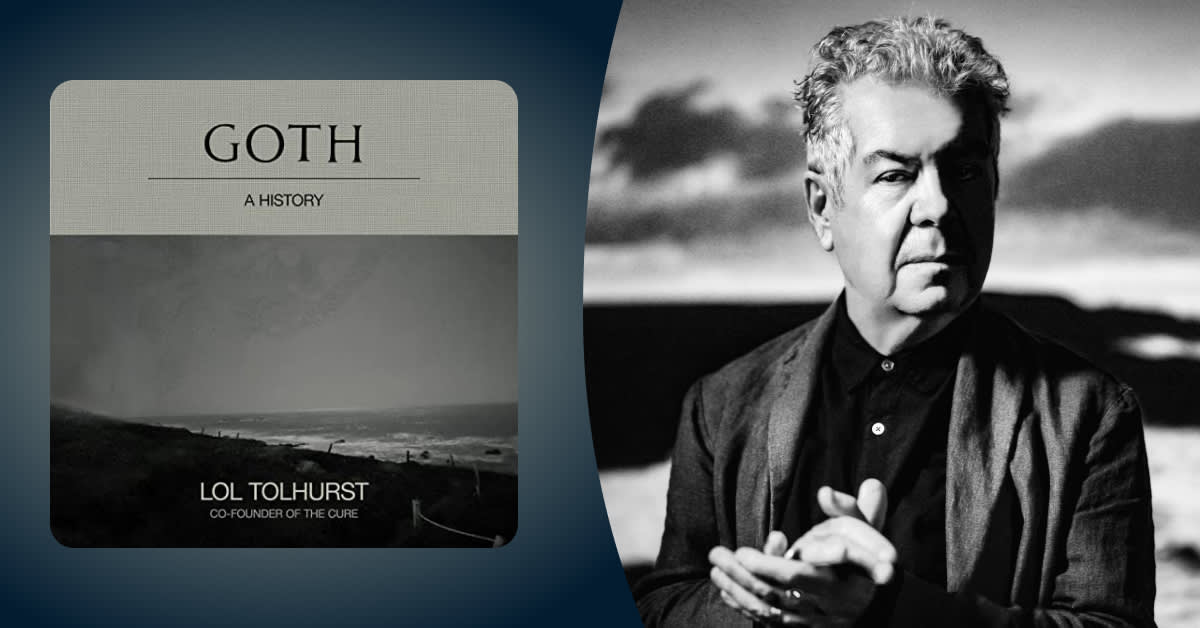Throughout my adolescence, I found myself drawn to the haunting art and moody aesthetics of the goth and emo subcultures. During a time of uncertainty and angst, the affirmation that there was no shame in finding beauty amid the strange, grim, and unusual made me feel far less alone. And while I've since shed the dark lipstick and wardrobe of black clothing, the expressive freedom, vulnerability, and emotional depth won by those years are undeniable.
That uncoupling of mere appearance and a deeper soul and sensibility is one of the tenets of gothic icon Lol Tolhurst's Goth: A History. Blending memoir with cultural criticism and deft research on art and music history, Tolhurst examines what really defines a subculture too often boiled down to its aesthetics, from Albert Camus to the Architects of Darkness.
Alanna McAuliffe: As a whole, the goth subculture seems to be largely misunderstood and mischaracterized. Your paradigm-shifting history seeks to change that. What new understandings do you ultimately hope listeners take away from Goth: A History?
Lol Tolhurst: When I think of what I want listeners to take away from Goth: A History, I am more concerned that people should understand the actual feelings and philosophy of the genre rather than the outward appearance or fashion of the subculture. Yes, I realize the external appearance is what most people consider “goth.” Still, I also want people to understand that goth is a very ancient journey of understanding and personal evolution more than anything else. Everyone I know who subscribes to the culture of goth has arrived there by considering their place in this world and how to deal with feelings of being, for want of a better word, "outsiders." Goth is a way of dealing with that place and time we find ourselves.
Back in 2016, you published your debut memoir detailing your time with gothic rock juggernaut The Cure. How did the process of writing and narrating Cured compare to that of Goth?
Writing Goth was considerably more challenging than writing Cured in one way, and much more straightforward in another. It was more complex in that I had to take in a lot of outside artists' involvement and more straightforward precisely because of the other artists—there were endless examples to cite!
Generally, though, it was more challenging to write than Cured. I had to find a way to write and convey what the whole experience of growing up goth meant to me and how it placed me in the world—something I didn't have to consider with Cured, as it was more of a description of my life. Goth required a lot of research, which I detest, but luckily, my son Gray is a tremendous researcher, so he supplied me with that. My job then was just to weave that into the overarching narrative of Goth, which is ultimately hopeful—which might surprise some people, I guess, who only have a monochromatic view of the subculture. Narrating it turned out to be a pleasurable experience in that while doing that, I could relive specific periods and events in my mind's eye—just the same as Cured.
Throughout this title, you explore not just gothic music but also literature and art. Are there any specific writers or works within this vein that you would recommend to listeners?
When I write about art or literature in Goth, I'm referring to writers and artists that speak to my understanding of goth. As such, some of them may not seem straightforward in the general knowledge of goth, but it is my job in the book to illustrate that for the listener. I am particularly fond of Sylvia Plath as a writer, as I see her dark confessional poetry and prose as much goth as anything else. As for painters, I love Francis Bacon’s work. His art is particularly emotionally goth to me.
It was recently announced that you’re teaming up with Siouxsie and the Banshees’s Budgie and acclaimed producer Jacknife Lee for an upcoming record, out this November. How was your experience recording this album, and what can fans anticipate from this new release?
Budgie and I have been long-distance friends since we first toured together in 1979. We've had similar life experiences, so it felt natural to do something together when we met again a few years ago. We found the third part of our trio in Jacknife Lee, the producer, and people will be shocked by the album we've created. It sounds like us but very contemporary, too. We are very excited to have people hear it!
Do you have a favorite recent listen you can recommend?
One audiobook I loved came out last year: Nabil Ayers’s My Life in the Sunshine. I met Nabil on his book tour last year, and I found that although we had different upbringings, there are so many similarities in our lives that I didn't expect initially. That is what interests me primarily—the connections we all share. That’s what I’m always trying to understand with writing and music.





